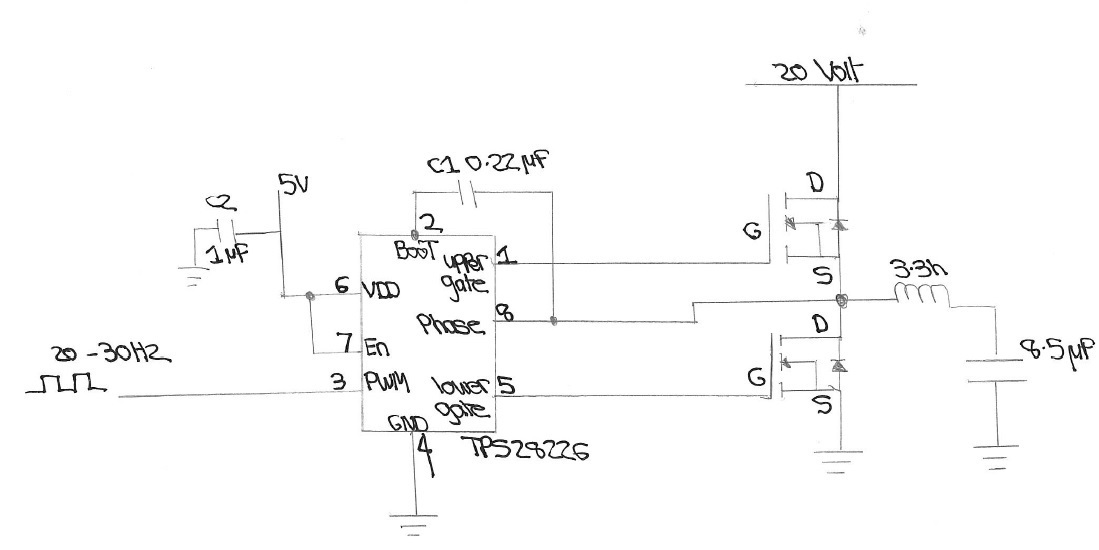Hi
I have just built a Half H-bridge circuit using the TPS28226 with 2 n-type devices and have followed a similar design to the data sheet. But wish to use the output into a low frequency resonant circuit being 22Hz.
But the device does not perform correctly at this frequency. The fitted coil in the centre point of the bridge is 3,3 henry, which is followed by a 8.5uF capacitor to give a resonant frequency around 30 hz's. But the device does not function correctly and eventually malfunctions drawing excessive current.
I changed the device and series capacitor to 47nf and the device act as you would expect at this higher frequency of 200-400hz region.
Question-1 Can the device be used at lower frequency around 22-30hz region ?
At the higher frequency level I changed the DC F.E.T Voltage to 10 Volts and damaged another device. When I looked at the TPS waveform on a a scope the resonant Voltage was good up to 32V which is what is probably damaging the device via the phase pin. Can this pin be protected from higher Voltages ?
I will download a copy of Tina and post my circuit layout over the weekend.
Any help will be greatly appreciated !!
Thanks Dave


